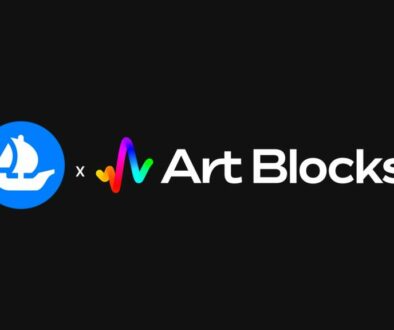BLUR FLIPS OPENSEA IN VOLUME
The rise of non-fungible tokens (NFTs) has been a major trend in the blockchain world in recent years. With their unique characteristics that make them ideal for digital art, collectibles, and other unique items, NFTs have captured the attention of investors, artists, and collectors alike.
One of the key players in the NFT ecosystem has been OpenSea, the largest NFT marketplace in terms of trading volume and sales. However, a new challenger has emerged in the form of Blur, a zero-fee NFT marketplace that is quickly gaining traction in the NFT space.
On Wednesday, Feb. 15, According to Nansen, Blur surpassed OpenSea in daily Ethereum trading volume for the first time, according to data analytics platform Nansen.ai. The trading volume on Blur’s marketplace stood at 6,602 ether (ETH) while OpenSea’s trading volume stood at 5,649 ETH. This surge in trading volume followed Blur’s release of a native token the day before, which helped push the competition between the two NFT marketplaces to a new level.
Competition persists
It’s worth noting that the NFT market is still young, and it’s not the first time that a challenger has emerged to give OpenSea a run for its money. In the past, Rarible and Nifty Gateway have both surpassed OpenSea in certain metrics, only to be overtaken again. The lesson here is that innovation is moving quickly in the NFT space, and it’s possible for a smaller player to gain a foothold and compete with larger platforms.
However, as the NFT market continues to grow, so does the scrutiny from regulators. The rise of NFTs has already caught the attention of government agencies, and it’s likely that we’ll see increased regulation in the space. As companies grow and reach a certain size, they may find themselves subject to more stringent regulations that could limit their ability to innovate.
OPENSEA STILL AHEAD
Despite this milestone, OpenSea is still the dominant player in the NFT space in terms of weekly trading volume and number of sales and wallets. OpenSea’s weekly volume is several times higher than Blur’s weekly volume, and the number of sales and wallets on OpenSea is still greater than on Blur. However, the gap between the two marketplaces in terms of these metrics has been closing, and as of Wednesday, the number of sales on OpenSea was only 1.63 times greater than Blur’s total number of sales, while the number of wallets interacting with OpenSea is now only twice as great as those interacting with Blur.
What does this mean for the future of the NFT ecosystem? It’s clear that there is a growing appetite for NFTs, and the rise of Blur shows that there is still room for innovation and new players in the space. The fact that Blur was able to surpass OpenSea in daily trading volume in such a short time is a testament to the potential of this new marketplace.
The rise of Blur and the competition between the two largest NFT marketplaces is a sign of the growing interest in NFTs and the potential for new players to emerge in the space. However, it’s important to keep in mind that the NFT ecosystem is still in its early stages, and there is much that we have yet to figure out. As the industry continues to evolve, it will be exciting to see how it develops and how new innovations will shape the future of the NFT space.



